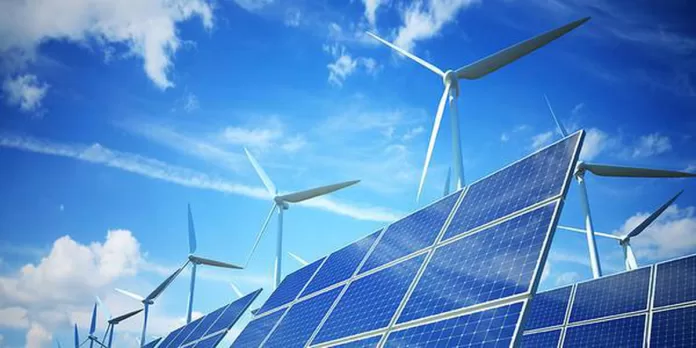The speakers included Shah Jahan Mirza, chief executive officer of the Alternative Energy Development Board (AEDB), Ali Zain Banatwala, deputy managing director of the National Transmission and Despatch Company (NTDC), Tobias Marz, a German climate activist and solar engineer affiliated with “8.2 Renewable Energy Experts”, Hassan Jafar Zaidi, chief executive officer of Power Planners International (PPI), Naila Saleh, project manager of Agora Energiewende, and Lubna Ria (IPS).
Shah Jahan Mirza reaffirmed the government’s commitment to reducing reliance on fossil fuels and decarbonizing the power sector through ambitious renewable energy uptake targets outlined in the 2019 Alternative and Renewable Energy Policy, which seeks to increase the renewable energy share to 30 percent by 2030.
The government is determined to make the transition to renewable energy sources as quickly as possible. In addition, he stated that the AEDB was dedicated to the timely completion of several mega-scale and distributed generating projects based on solar PV.
Banatwala, echoing the government’s desire to increase the proportion of renewable energy in the grid, emphasised that the intermittent nature of renewable energy may pose challenges to the grid’s system operations if it is integrated into the grid.
Nonetheless, he added, the NTDC is fulfilling its responsibility by conducting a comprehensive analysis of the possibilities of renewable energy adoption, necessitating immediate joint measures to decarbonize the electricity industry.
The RE experts addressed the conclusions of an ambitious solar and wind road plan created by “8.2 Renewable Energy Experts” and “Power Planners International” that included proposals for increasing the growth of wind and solar power beyond the IGCEP-adopted governmental objective.
Beyond IGCEP 2022 examines the 10-year generation expansion programme for Pakistan and determines if a more aggressive pursuit of solar and wind power (“VRE”) by 2030/31 will be feasible and advantageous.
Based on the hourly dispatch of 2030, it is conceivable to enhance the anticipated total VRE capacity from 20 GW to 33 GW by adding modest grid infrastructure upgrades by 2030.
In addition, this would lower overall emissions from energy generation by 50 percent and the average cost of energy generation by 15 percent. The study recommends including this more ambitious target in the next iteration of the IGCEP (due in June 2023), pursuing a strategic reinforcement of the road infrastructure (including the HVDC link to Chaghai in Balochistan), placing a strong emphasis on the flexibilization of the operation of hydro and coal units, and implementing a strict and localised annual tender plan for auctioning off 33 GW of solar and wind power over the next decade.
Saleh emphasised that in this circumstance, the rooftop solar system has enormous potential and may be a win-win by offering sustainability, supply security, and affordability.
Rooftop solar presents a compelling argument for Pakistan due to its ability to assist satisfy local demand, minimise capacity payment load and transmission and distribution losses, and control daytime peaks.
She emphasised the need to design appropriate business models that ensure a viable business case for involved stakeholders and address the prevalent challenges in the socio-technical system, such as high up-front costs, finance mobilisation issues, regulatory gaps, and the absence of facilitative organisational, business, and finance models.
Thus, it is apparent that the socioeconomic growth of communities is strongly dependent on energy accessibility.
Riaz emphasised that mini and micro-grids (MGs) present a favourable choice for electrification, however extending grid infrastructure to the off-grid regions, where around 50 million people dwell, has remained a stumbling block.
These grids act as autonomous and decentralised power networks that are capable of operating independently of a national grid.
By adding value to local products and services, this would enhance rural economic conditions and stimulate local company growth. She emphasised that RE-dominated MGs are far more financially viable than conventional fossil fuel-based power.





